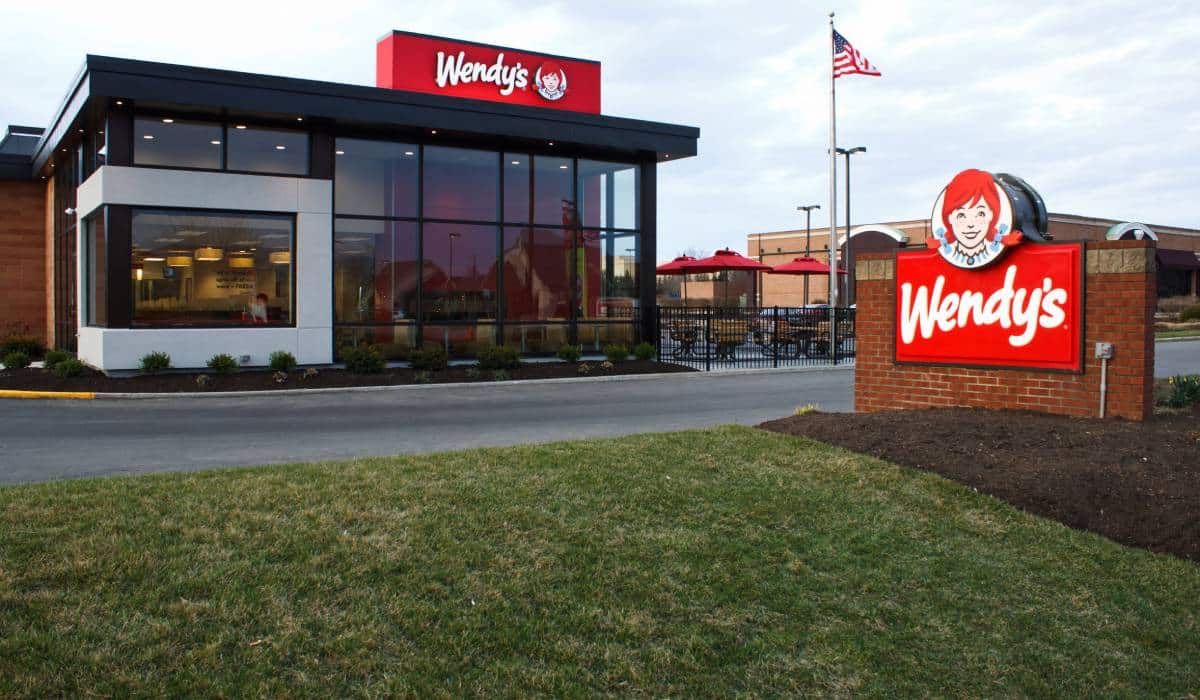On his first earnings call as Wendy’s CEO, Kirk Tanner quickly let investors know the brand isn’t afraid of spending money to make money.
That starts with the breakfast category, which will receive $55 million worth of incremental company advertising in the U.S. and Canada, split evenly across 2024 and 2025. Tanner said the investment will amplify Wendy’s plans to support an “always on” approach across media partnerships and activations.
The daypart launched domestically nearly four years ago and has transformed into “one of the most compelling levers when considering sales growth and margin acceleration opportunities,” Tanner said. Breakfast earns about $3,000 per week per unit, and the expectation is that the capital injection will double the rate to $6,000 over the next two years. That sales growth doesn’t include any incremental labor costs either.
“As we tell our breakfast story, we are on a mission to ensure everyone has tried breakfast at Wendy’s because we know from experience that once customers try our fresh-cracked eggs and crispy bacon, they will be back again and again,” Tanner said during the brand’s Q4 earnings call. “The level of quality we provide on our breakfast menu supports our highest customer satisfaction scores and we are now driving further growth at the daypart by providing our amazing food at a great everyday price alongside craveable innovation. Throughout the year, I’ve had the privilege of meeting with some of our growth-minded franchisees, and I can tell you they are all-in on breakfast and are committed to further supporting our investments by doing everything they can to execute at the highest level in the morning.”
Wendy’s is driving customers to breakfast with product news, like launching a Breakfast Burrito and leveraging outside partnerships to create innovation, such as the Cinnabon Pull-Apart. Everyday value is key as well. In the second half of 2023, the chain unveiled a 2 for $3 breakfast bundle that’s now permanently attached to the breakfast menu.
According to Tanner, breakfast represents about a third of same-store sales growth.
“It’s certainly a big bet for us,” he said. “A lot of upside for us, and we really have system excitement. So I’m really excited about this opportunity.”
READ MORE:
Wendy’s Strikes Big with Drive-Thru Automation
Wendy’s Revs Up App Engagement with Attractive Discounts
In addition to breakfast, Wendy’s is pouring $15 million into digital infrastructure this year to enhance the mobile app and its loyalty capabilities. The brand has come pretty far, with digital sales expanding from less than $250 million in 2019 to nearly $2 billion in 2023. The company believes it will reach more than $2 billion in 2024, which would be a year earlier than anticipated. To unlock further growth, Wendy’s implemented a new customer data platform in Q4 and is in the process of evolving the rewards program with the help of third-party partners. These initiatives will help the chain’s ability to act on guest information through segmentation and machine learning.
At physical restaurant locations, the burger giant will invest roughly $20 million to roll out digital menuboards to all U.S. company-operated restaurants by the end of 2025 and spend about $10 million in the next two years to support digital menuboard upgrades for the global system. Wendy’s expects this equipment to drive order accuracy, a better employee experience, and sales growth from upselling and consistent merchandising execution.
Starting as early as 2025, Wendy’s will start testing dynamic pricing, AI-enabled menu changes, and suggestive selling. The brand has taken a big step already with its testing of automated voice ordering at the drive-thru in partnership with Google Cloud.
“This technology also plays a key role on our restaurant team, enabling the crew to focus on what matters—preparing fresh, high-quality Wendy’s favorites and building customer relationships to bring them back time and again,” Tanner said. “We will do everything we can to ensure this new technology is delighting our customers and crew while enhancing our restaurant economic model. Along the way, the incremental sales growth we expect to deliver behind our investment in breakfast, digital, and technology will drive meaningful sales leverage in our restaurants. These initiatives are highly incremental and margin accretive to the overall business.”
Wendy’s U.S. same-store sales increased 0.9 percent in Q4, lapping 5.9 percent growth in the year-ago period. For the year, comps lifted 3.7 percent, rolling over 3.9 percent in 2022.
Despite same-store sales averaging about 2 percent growth in the second half of 2023, the brand expects an acceleration this year to approximately 3 to 4 percent. The main reason behind the increased guidance is the money being invested in breakfast and digital. Additionally, Wendy’s believes the hamburger category will have slightly positive traffic in 2024. In terms of profitability, the chain projected company-operated margin to rise from 13.5 percent in 2023 to 16 to 17 percent this year because of higher breakfast and digital sales, cost management projects, flat commodities, and labor inflation returning to historical norms.
The company is losing traffic from lower-income consumers, but gaining with higher-end guests—a similar trend experienced across the quick-service industry. Wendy’s, however, remains confident in its barbell strategy, from the $5 Biggie Bag to the premium Made to Crave platform.
“The expectation is clearly that net disposable income should go slightly up sequentially,” said CFO Gunther Plosch. “Why do we believe this? The economy is doing pretty well. We are basically in full employment, gross inflation is coming down. So quarter versus quarter, the consumer should start to see net disposable income coming up slightly, feel a little bit richer, and feel a little bit like, ‘Yeah, you know what, I can treat myself and come a little bit more often into the restaurants.’ Fuel costs came down a little bit so driving around mobility has come a little bit better.”
The goal is for increased sales and profits to push unit expansion. Wendy’s opened a net of 145 restaurants globally in 2023, comprising 36 in the U.S. and 109 internationally. The chain is shooting for north of 2 percent net restaurant growth in 2024 and a rise to 3 to 4 percent in 2025. Over 90 percent of the store pipeline through 2025 is committed under a development agreement. Also, 70 new franchisees have been approved in the past two years.









